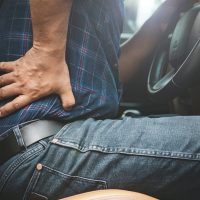What Causes Neck and Lower Back Pain After an Accident?

Car crashes of all types can be severely damaging to the neck and back. The spinal cord is critical to proper bodily function, and any improper force or movement can lead to debilitating conditions and chronic pain. The force of a car crash sends occupant bodies in different directions at a high rate of speed, and that momentum is eventually broken by either a seat belt, a dashboard, a window, or another seat. The impact, combined with the twisting, pulling, and other contortions the body experiences during a crash, can do severe damage to various parts of the spine. Below, we talk about some of the more common neck and back injuries that arise in car crashes and what causes them. Reach out to a knowledgeable Lancaster car accident lawyer if you or someone you care about has been hurt in a Southern California car crash.
Common Car Accident Neck and Back Injuries
The spine is incredibly complicated and incredibly important to bodily functions, and yet it is also incredibly delicate. Different regions of the spine control different parts of the body. The various parts of the spine are connected by muscles, ligaments and discs, and damage to any one of these pieces can be painful and debilitating. Due to the spinal cord’s vulnerability during a crash, many different neck and back injuries often arise, including the following:
- Whiplash. Whiplash injury occurs when a sudden impact sends the torso forward while the neck and head swing backward. The head and neck then fling forward in a whipping motion, overstretching the muscles and tissues in the neck. Whiplash can occur even in low-speed “fender-benders,” because the sudden swinging back and forth causes the head and neck to move at a much higher rate of speed than the speed of the vehicles involved (much like the crack of a whip). Whiplash can lead to long-lasting pain in the neck, shoulder, arm and back, as well as stiffness, limited range of motion, headache, fatigue, and neurological issues.
- Herniated discs. Spinal “discs” provide a cushion between the vertebrae. A sudden traumatic impact can cause the soft inner filling of a disc to spill out through its tough outer casing. As the tissue and the discs shift out of place, the tissue often comes in contact with the surrounding nerves and causes intense pain.
- Fractures and other spinal cord damage. When the lower body is held in place by a seatbelt but the upper body is swung about, small cracks can appear in the spine. Even small fractures can lead to numbness, trouble controlling extremities, muscle weakness, and bladder control issues. If the spinal cord is damaged or severed during a crash, more severe conditions including permanent paralysis can occur.
- Lumbar sprains. The lumbar region of the spine, more commonly known as the lower back, is often injured due to excessive force being placed on the back. Lumbar injuries often arise from lifting heavy objects or playing contact sports. In a car crash, traumatic force causes the ligaments, muscles, and tendons in the back to over-stretch, causing a sprain.
If you or someone you love has been involved in a car crash in the Antelope Valley, get help seeking damages from an experienced professional by contacting a Lancaster personal injury lawyer at the Kistler Law Firm for a free consultation at 661-206-6990.

